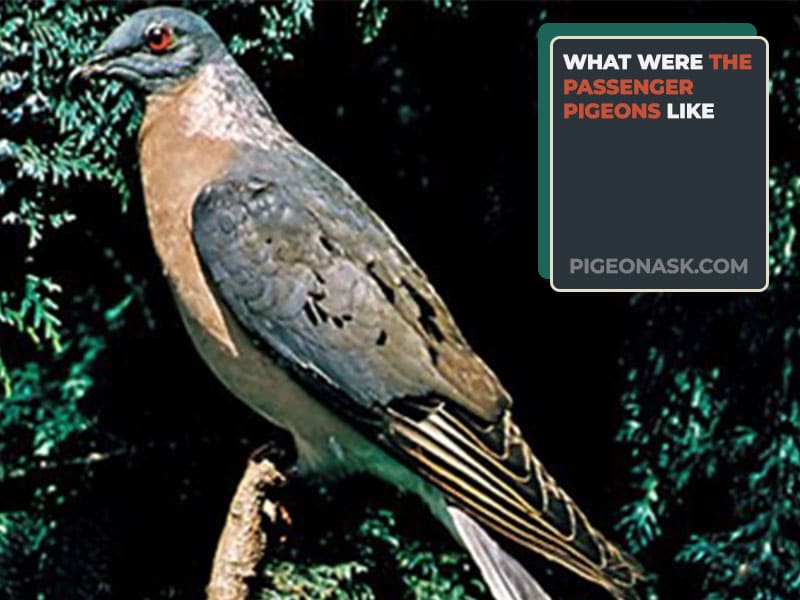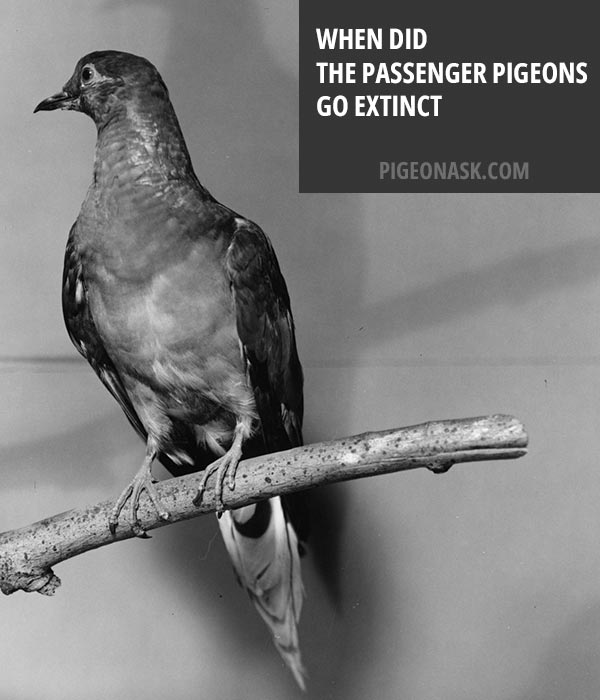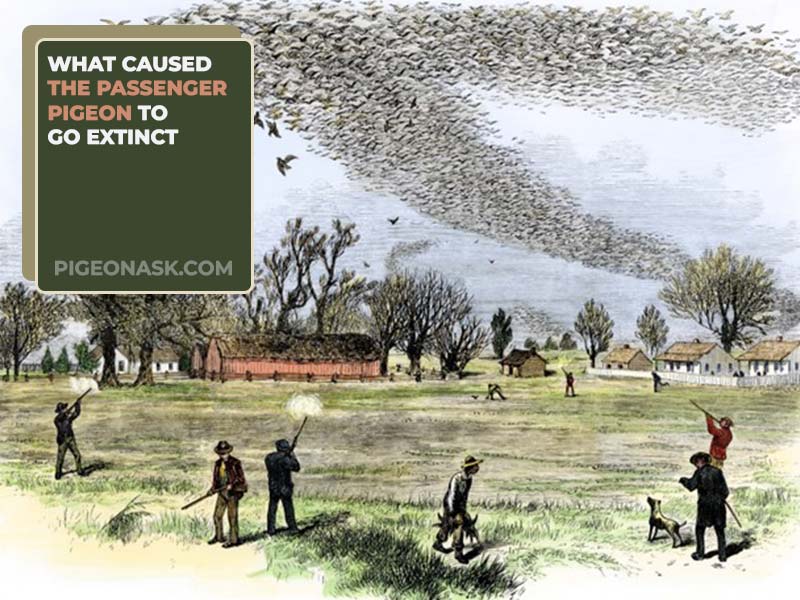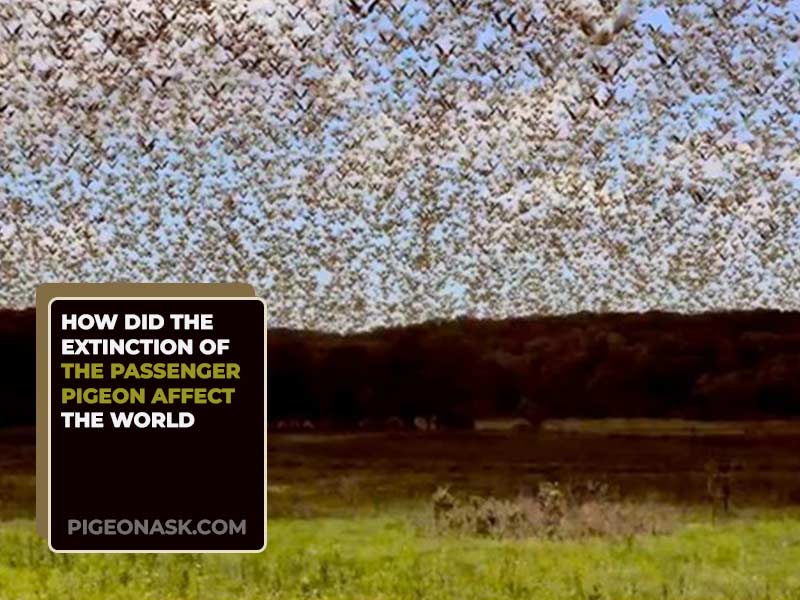Why Did the Passenger Pigeon Go Extinct?
One of the most mysterious and contested questions within genetic biology is why did the passenger pigeon go extinct?
Passenger pigeons went extinct because of unprecedented hunting by human beings. While passenger pigeons once existed in large numbers, the widespread poaching of this bird led to a sharp decline in their population.
However, naturalists, environmentalists, and genetic engineers believe in different theories.
Some even argue that passenger pigeons had adverse consequences on nature, due to their overwhelming presence in forest areas where they bred.
This article will explain the causes behind the passenger pigeon’s extinction and the contentions behind the various scientific theories that it encompasses.
Looking For More Blog:
What Were the Passenger Pigeons Like?
The passenger pigeons were one of the most fascinating species of pigeons that ever existed.

Here is some information that will help familiarize you with passenger pigeons:
- The passenger pigeons were about 13 inches in height, and their feathers were bluish-gray around their head, and pink around their body.
- These pigeons traveled in large flocks from one part of the country to another, and were hence, coined as ‘Ectopistes Migratorius’ by scientists.
- The passenger pigeons were most prominently seen in North America. In fact, their number was so large that they contributed to nearly one-third of all North American birds today.
- Besides their color and abundance, their most interesting characteristic was to migrate in such large numbers that the skies would be dark for days. Millions of passenger pigeons moved at a time, blocking off sunlight with their presence.
- Each pigeon laid exactly one egg, and over 100 nests could be found in a nesting area for passenger pigeons.
- Passenger pigeons were hunted for sport and also for the purpose of mass consumption by humans as food.
- There are many passenger pigeons in museums all around the world, fossilized or frozen inside ice blocks.
When Did the Passenger Pigeons Go Extinct?
Passenger pigeons made up a large portion of the bird population during the 1800s.
According to the calculations of naturalist A.W. Schorger, the passenger pigeon breeding grounds in 1871 encompassed nearly 850 square miles of Wisconsin, with nearly 136 million breeding passenger pigeons.
However, during the 1890s, their numbers started declining. By the beginning of the 19th century, they went almost extinct, with a few breeding passenger pigeon groups left.

The last known passenger pigeon, a female, called Martha, passed away in the Cincinnati Zoo on September 1, 1914.
She had a medical condition called ‘Cerebral Palsy’. This caused her daily functions to deteriorate until she passed away.
She was about 29 years old. According to scientists, she never produced a healthy egg in her life and was thus the last known member of the passenger pigeon species.
To remember the last of the passenger pigeons, a museum in Washington has frozen the specimen of Martha in a 300-pound ice block to be visited by tourists.
Likewise, many museums have frozen specimens of passenger pigeons to commemorate their existence.
What Caused the Passenger Pigeon to Go Extinct?
There are many scientific theories that explain why the passenger pigeon went extinct.

However, the most believed one is that they were hunted by humans to the point of extinction.
This theory is contested by environmentalists, whose claims vastly differ. Let us dive into the nitty gritty details of these contested theories.
01. Extinction Due to Over Poaching
The fact that passenger pigeons existed in massive numbers meant that they were not only easier to mass hunt but also an abundant source of protein.
Moreover, they were one of the tastiest birds to be eaten in the North American region.
The ease of procuring passenger pigeons in large quantities meant that human beings started relying on these birds heavily for food.
The hunting, selling, and eating of passenger pigeons was highly commercialized.
According to conservationists, the unprecedented consumption of passenger birds caused their extinction.
02. Extinction Due to Adaptation Failure
The genetic information collected from the paws of passenger pigeons by scientists suggests these species were highly dependent on colonization and a large population for their growth and reproduction.
Since one pigeon only gave one egg, their growth cycles were very volatile.
Scientists concluded that passenger pigeons went through unpredictable booms and slumps in their population growth rates.
This meant that their population dipped and soared without any warning.
Since the population of passenger species was dependent on the large populous, it was only a matter of time before one of the slumps in their population would cause genuine threats of extinction.
Hence, it is thought that this suboptimal adaptive feature of passenger pigeons led to their demise.
03. Extinction Due to Natural Reasons
Environmentalists believed that the large population of passenger pigeons was harmful to the land area that they infested.
This is because the passenger pigeons were known to deplete the nutrient resource of their entire breeding grounds by consuming unprecedented amounts of food.
Once they were done with exploiting all the natural resources of one area, these birds flew in large crowds to another area to breed.
This left large areas of trees devoid of any nutritious source for other animals or birds.
The natural way of adaptation is harmony between all species. Since the passenger pigeons were harming the biodiversity and conservation of resources, it is believed that nature hit them with adverse forces to make them extinct.
As explained by the Department of Vertebrate Zoology of the Smithsonian Institute, “The interests of civilization, with its forest clearing and farming, were diametrically opposed to the interests of the birds which needed the huge forests to survive.”
It is evident that the carrying capacity of the earth finally gave in to the existence of these birds.
How Did the Extinction of the Passenger Pigeon Affect the World?
The extinction of passenger pigeons gave rise to many philosophical thoughts about humans and their role in the conservation of the earth.
According to naturalists, the fact that human beings could erase an entire species of animals that were previously so abundant indicated a grim reality.

This gave rise to the conservationist movement that exists to this date. However, the environmental implications are also significant.
Since passenger pigeons were part of a large number of birds dependent on the earth’s resources, their extinction meant that other species could now enjoy the natural resources more.
Even if the environmental footprint of the passenger pigeons was reduced, so did the source of food for many people.
Is It Possible to Bring Back Passenger Pigeons?
Scientists believe that it is possible to bring back passenger pigeons through genetic engineering. This process is known as genetic resurrection.
The reason why many scientists still believe that the genetic resurrection of passenger pigeons is possible is that they have already existed in small numbers for some time.
Hence, if scientists can biologically produce these birds in small amounts in labs, they can sustain it with their own techniques.
The main question is, however, the need to bring them back?
Do we want to see passenger pigeons thrive again? Or will human beings hunt them to extinction again?
Final Words
Passenger pigeons were once a very usual sight in North America. It is the greed of humans, and the need to exploit all natural resources at arm’s length which contributed to their extinction.
There are so many theories and rumors that explain Why did the passenger pigeon go extinct, and this article gives you the tip of the iceberg.
Is your inner philosopher not satisfied with the contents of this article and needs more? Visit our Facebook, Twitter, and Pinterest to indulge your need for more interesting information. Do share this article if you liked reading it.
Image Credit:
- Photos from Bostonglobe.com (Plimoth Plantation)
- Photos from Npr.org (Wikimedia Commons)
- Photos from Si.edu
- Photos from Audubon.org/photography
Article References
- https://www.britannica.com/animal/passenger-pigeon
- https://www.audubon.org/magazine/may-june-2014/why-passenger-pigeon-went-extinct
- https://www.npr.org/sections/thetwo-way/2017/11/16/564597936/why-did-the-passenger-pigeon-go-extinct-the-answer-might-lie-in-their-toes
- https://www.si.edu/spotlight/passenger-pigeon
- https://www.scientificamerican.com/article/3-billion-to-zero-what-happened-to-the-passenger-pigeon/
- https://www.bostonglobe.com/metro/regionals/south/2014/08/27/loss-iconic-passenger-pigeon-still-echoes-century-later/CqM8qDNw0RgWgQ2qwAwgxL/story.html
- https://www.burkemuseum.org/news/billions-none-passenger-pigeon
